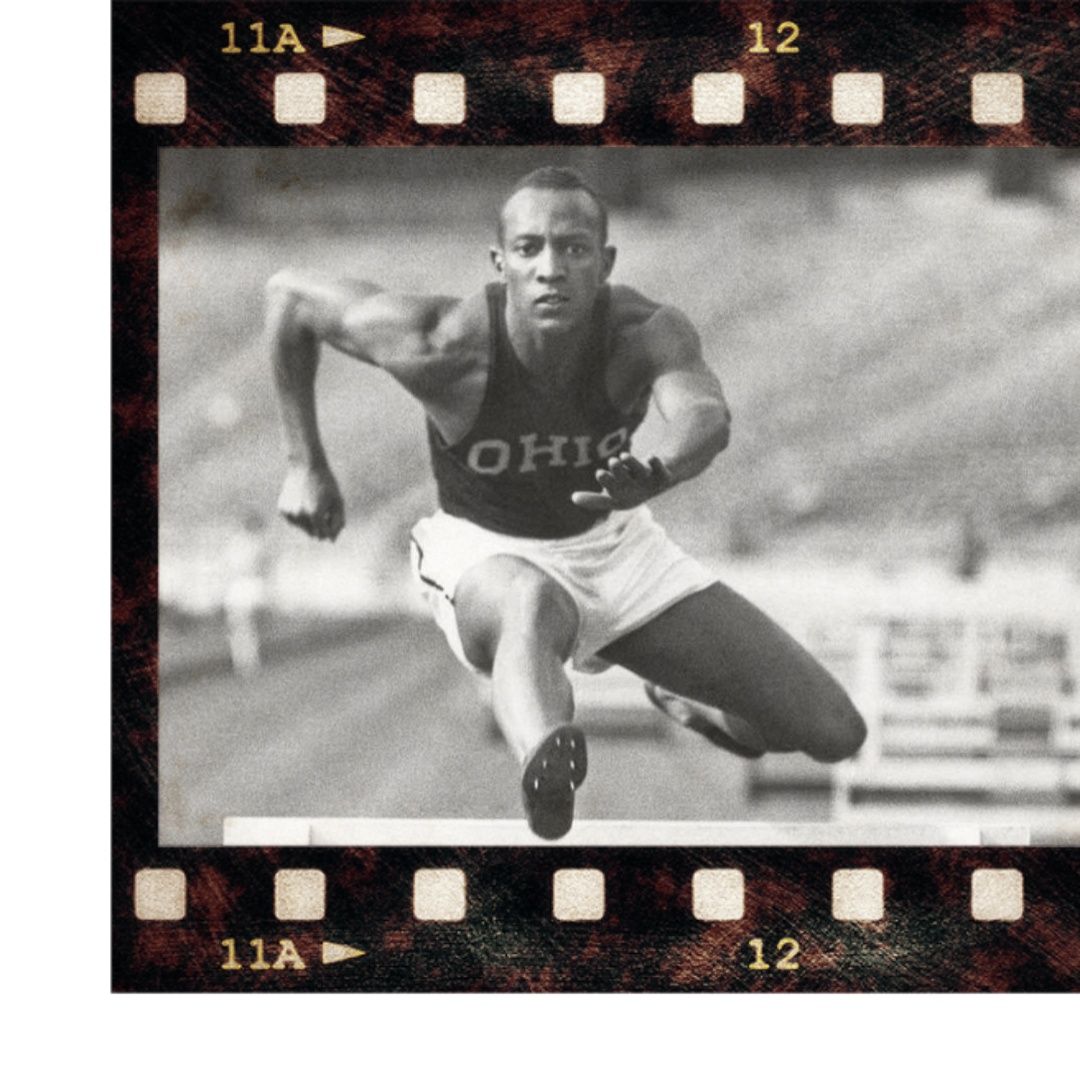May 25, 1935
THAT DAY............21-year-old Jesse owens, set five world records and equalled a sixth in 45 minutes in the big 10 conference world championships, he averaged a world record every nine minutes despite an injury.
Jesse Owens was a great track and field athlete best known for for his exploits at the 1936 Berlin Olympics, the black son of an Alabama sharecropper became an athletic legend when he won gold medals in the 100 and 200 meters, the long jump and the 4x100 relay. denying Adolf Hitler's toxic theories of racial supremacy in the same time. But one-day, May 25, 1935,.at the 1935 Big Ten Track and Field Championships in Ann Arbor, In less than an hour, the 21-year-old Ohio State sophomore tied the world record in the 100-yard dash and then set the world record in the long jump, the 220-yard dash and the 220 low hurdles…. more impressive was the fact that Owens had a sore back that caused him excessive stiffness and pain. Owens required help just to pull on his sweat suit. Owens couldn't stretch or jog. Nobody expect that he would realized the greatest single day performance in athletic history, not only in track and field but in any sport.
At the start of the day, Owens doubted he could compete. He had injured his lower back falling down the stairs five days earlier.
3:15 p.m. 100: After a slow start Owens' tremendous acceleration put him ahead at 30 yards. His official winning time of 9.4 seconds tied the world record, yet more than half of the race's official timers clocked him in 9.3, a new world mark. Rules of the day, however, stipulated that a runner be given his slowest time. The first official 9.3 100 would have to wait for 1948.
3:25 p.m. Long jump: Owens needed just one leap to improve the world record by more than a half-foot to 26 feet 8¼ inches. Only Bob Beamon's legendary 29-2½ jump at the 1968 Mexico City Olympics has improved the long jump record by a greater distance.
3:34 p.m. 220: Until the 1960s, the 220 in the United States often was run on a straightaway rather than on a curve, Owens ran 20.3 seconds to crush the old mark of 20.6.
4 p.m. 220 low hurdles: Low hurdles stand only 2 feet, 6 inches (high hurdles are a foot taller), allowing Owens, who was not a gifted hurdler, to use his great speed between the barriers to defeat more technically superior opponents. He became the first runner to break 23 seconds with a time of 22.6 to win by five yards.
Owens had averaged a world record every 11 minutes. So many fans wanted to congratulate Owens after the meet that he had to leave the locker room through a bathroom window.
"People are surprised at how competitive Owens would still be as an athlete today," said Robert Gary, the current Ohio State track and field coach and meet director of the annual Jesse Owens Track Classic in Columbus. "I don't think many people realize what a phenomenal athlete he was."
Today. Usain Bolt’s time in the 100 meters is way faster than Owens BUT, he doesn't compete in the hurdles or the long jump. Unlike Owens, he doesn't run on dirt tracks or without the benefit of starting blocks. Bolt can train all year and doesn't have to work in a gas station as Owens did in college. Finally, Owens last raced when he was 22.
the findings of researchers who apparently compared Owens and Bolt's biomechanics and the speed derived therefrom, eliminating all environmental differences (track, wind, equipment, etc.) and found that when Bolt ran 9.69 in the 2008 Olympics Owens would have finished second, within one stride. Athletes have enjoyed a century of improvements in nutrition, fitness, equipment, footwear and track surfaces. So to compare Jesse Owens to Usain Bolt, is not fair.
Bolt is the first person to achieve a ‘triple triple‘, winning gold medals in 100m, 200m and 4X100m relay in 3 consecutive Olympics. Bolt’s personal best of 9.58 seconds in the 100 metres is the fastest ever run.
Usain Bolt was born with scoliosis. Scoliosis is the abnormal curvature of the spine. Scoliosis usually occurs in children and youth. It can appear as early as age three but is more commonly detected between ages up to 14. “When I was younger it wasn’t really a problem. But you grow and it gets worse. My spine’s really curved bad [makes “S” shape with finger]. But if I keep my core and back strong, the scoliosis doesn’t really bother me. So I don’t have to worry about it as long as I work hard. The early part of my career, when we didn’t really know much about it, it really hampered me because I got injured every year.”
USAIN BOLT in jesse owens era ….wouldn’t maybe even competing with his scoliosis. In this era you had to do with it.
To know more about the subject:
Jesse Owens: Track & Field Legend: Biography". Archived from the original on December 23, 2007. Retrieved January 6, 2008.
Jesse Owens, 1913–1980: He Was Once the Fastest Runner in the World". Voice Of America. August 27, 2011. Retrieved February 26, 2015.
Altman, Alex (August 18, 2009). "Usain Bolt: The World's Fastest Human". TIME. Retrieved June 15, 2010.
Jesse Owens — Obituary". The Washington Post. April 1, 1980. Retrieved June 14, 2018.
Jesse Owens: the life and times of a 20th century icon". The Telegraph. May 18, 2016. Retrieved June 14, 2018.
Wile, Rob (11 August 2017). "Usain Bolt Is Retiring. Here's How He Made Over $100 Million in 10 Years". Money. Retrieved 29 January 2019.
Bolt completes triple-triple, proves he's greatest sprinter of all time" (20 August 2016). The News & Observer. 31 August 2016. Archived from the original on 28 January 2017.
Bolt's heroics arrive just in time". Reuters. 25 August 2008. Archived from the original on 3 December 2013. Retrieved 28 November 2013.





